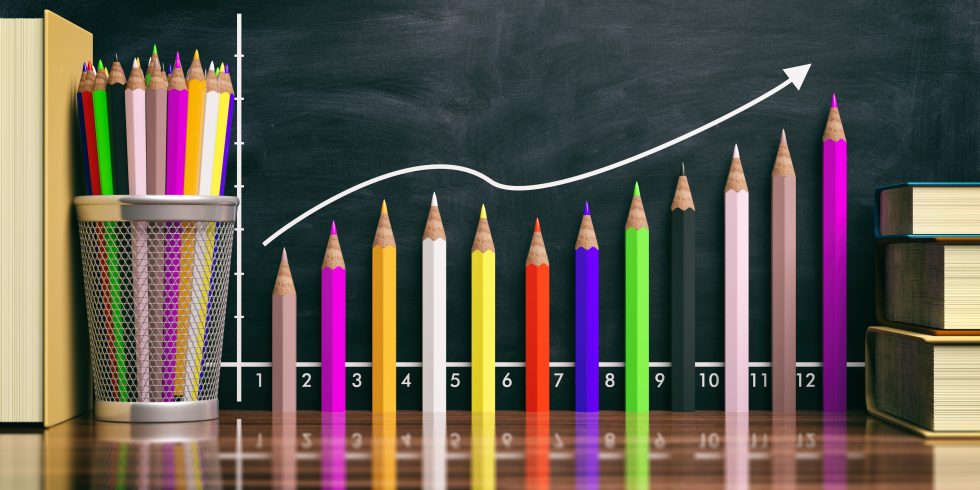
Quantifying Student Growth
Happy summer! (or almost summer to those of you still in school-It’s almost over!!!)
I recently responded to a question on the Facebook French Teachers in the US page about quantifying student growth for Interpersonal Speaking. A few years ago, my state required that student growth be part of teacher evaluations. This is certainly possible to do with performance assessments, but somewhat difficult. As a department, we decided we wanted to target interpersonal speaking to show growth. I and a 2 other FL teachers designed this for our department:
Remember: This was intended for FL teachers and non-FL administrators who may be conducting the FL evaluations.
Learning Target:
The students will demonstrate growth in oral communication, with a particular emphasis on interpersonal communication.
Departmental Goals:
As a department, our two goals are Comprehensibility (speaking skills) and Comprehension (listening skills). Both of these elements have to be present for a reasonable conversation to occur.
We define Comprehensibility as how well the speaker is understood. Comprehension is defined as how well the listener understands what he/she hears.
Student Performance Measurements:
Student performance will be measured by Type 2 (Common Unit Assessments-IPA) assessments. Our rubrics include bands for Comprehensibility and Comprehension and, thus, one assessment will yield data for both elements. Therefore, for our baseline data, one Type 2 CUA will be used with the understanding that two data points will be taken from the assessment. The same will occur with the midpoint and final assessments at the end of the data collection period. Therefore, we will have six points of data from three CUAs.
So let’s define this mumbo jumbo: We use our Interpersonal Speaking CUAs for a grade (where is the student now?) and to show growth (how far has the student progressed along the ACTFL benchmark levels?). So, in essence, we have 2 rubrics for each assessment: We have 1 to “grade” it and 1 to show growth.
Let me show you an example:
- Students have an unscripted conversation on X topic.
- Teacher assesses them in the context of the unit and assigns a grade based on this rubric:
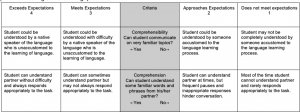
- Teacher assesses them with ACTFL Benchmarks to determine growth throughout the school year. This is done to establish a baseline, a mid point and a final. After the baseline is determined, the teacher decides the growth target for the student. The target may not be the same for every student in the class but the hope is that every student shows growth regardless of the baseline. Students should progress to a new benchmark to show growth. These are the benchmarks we determined. We used the ACTFL AAPPL score descriptions as a guide. This document can be found here.
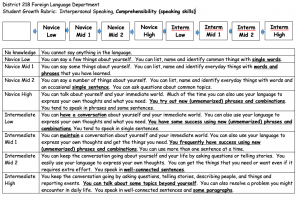
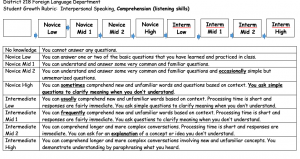
- Finally, the teacher enters the Benchmark onto an Excel sheet with drop down menus. This sheet then determines if the student has met the growth target or not. The spread sheet can be accessed here.
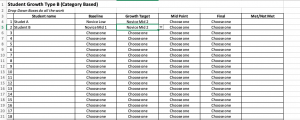
I hope you can use this information to help you show student growth or even as a tool to track your students’ progress along the ACTFL Benchmarks. Please email me at jesuismsmadame@gmail.com or leave a comment below if I can be of further assistance. 🙂
